AMD Radeon Refresh - HD 7970 GHz Edition (Review)
With all of the expected single-GPU SKUs in the Southern Island product stack launched, you might think that this article would herald the arrival of the "big daddy" dual-GPU Radeon HD 7990. Well, you'd be wrong. And probably disappointed, considering that AMD all but showed off the Radeon HD 7990 at AMD Fusion Developer Summit.
What we are talking about is an update to the flagship Radeon HD 7970, with the HD 7970 GHz Edition. The "GHz Edition" monicker was first used with the mainstream Radeon HD 7770, being the first card to break 1,000 MHz barrier for the core clock. The original Radeon HD 7970 launched with a 925MHz clock, and a 250W max power profile. The GHz Edition of HD 7970 is specced at a base core clock speed of exactly 1GHZ, and a "Boost Clock" of 1.05GHz, while maintaining the original 250W power draw. In all of my testing, the Boost was always boosting, and we were running at 1GHz+
The original Radeon HD 7970 launched at an MSRP of $549 (considered by many to be high), but was reduced to $479 (after NVIDIA brought pressure to bear with the GTX 680). The Radeon HD 7970 GHz Edition will sell alongside the original offering, at a price of $499. The GHz carries a price premium of 4.2%. Will we get that much additional performance out of a 13.5% increase in the core clocks?

| Card | GPUs | Transistors | Memory | Bus Width | Shaders | Clock (MHz) | TDP (Watts)* | Power | MSRP | ||
| Core | Mem | Idle | Max | ||||||||
| AMD Radeon HD 7970 GHz Edition | 1 | 4.3B on 28nm | 3GB | 384-bit | 2,048 | 1,050 | 1,500 | <3 | 250* | 8+6-pin | $499 |
| AMD Radeon HD 7970 | 1 | 4.3B on 28nm | 3GB | 384-bit | 2,048 | 925 | 1,375 | <3 | 250* | 8+6-pin | $479 |
| AMD Radeon HD 7950 | 1 | 4.3B on 28nm | 3GB | 384-bit | 1,792 | 800 | 1,250 | <3 | 200* | 6+6-pin | $399 |
| *These values represent the maximum wattage allowed through the AMD PowerTune. Idle for the 7000-series is based on a "long idle" scenario. | |||||||||||
PowerTune w/ Boost
AMD launched it's PowerTune feature set with the Radeon 7000 series launch, and it allowed the card to achieve both higher max clocks and a lower idle state. PowerTune with Boost allows for both the dynamic clock and dynamic voltage controls. This is probably enabled by the fact that the core voltage of the Tahiti XT2 core was lowered to 1.02V, from the 1.175V of the original Tahiti XT core.


Performance Improvements
Obviously a faster core clock will translate into a faster card. In the press briefing, AMD also touted performance improvements in their driver. The question becomes how much of the improvements in the new card are from new silicon, and how much is from improved driver performance. To parse this out, I went back and tested the original HD 7970 with the new driver.
With regards to the driver, widescreen saw some good gains in Aliens vs. Predator and Metro 2033, and moderate gains in Dirt 3 and Heaven 2.5. This was moderated by flat performance in HAWX 2 and some slight declines in Mafia II and Shogun 2. In reality these last two benchmarks were only off by 1-2 fps, so I'd still call this flat (I'm sure the machine has accumulated a bit of cruft since the original benchmarking).
The total fps across the benchmark suite increased 2% in our selected tests, for 1080p widescreen. Eyefinity was a similarly mixed bag. Heaven 2.5 and Metro 2033 shows some gains, with Dirt 3, HAWX 2 and Mafia II flat. AvP and Shogun 2 posted single frame losses. Overall, only a 1% increase in Eyefinity.
Looking at the new silicon, the Radeon HD 7970 GHz Edition posted strong gains in virtually every title. Overall the new card was 9% faster than the original HD 7970 with new drivers. In Eyefinity, the HD 7970 GHz Edition was 5% faster than the original card. Point to note, none of these titles take advantage of the new features developers have leveraged for GCN. We'll look at those titles more in future articles.
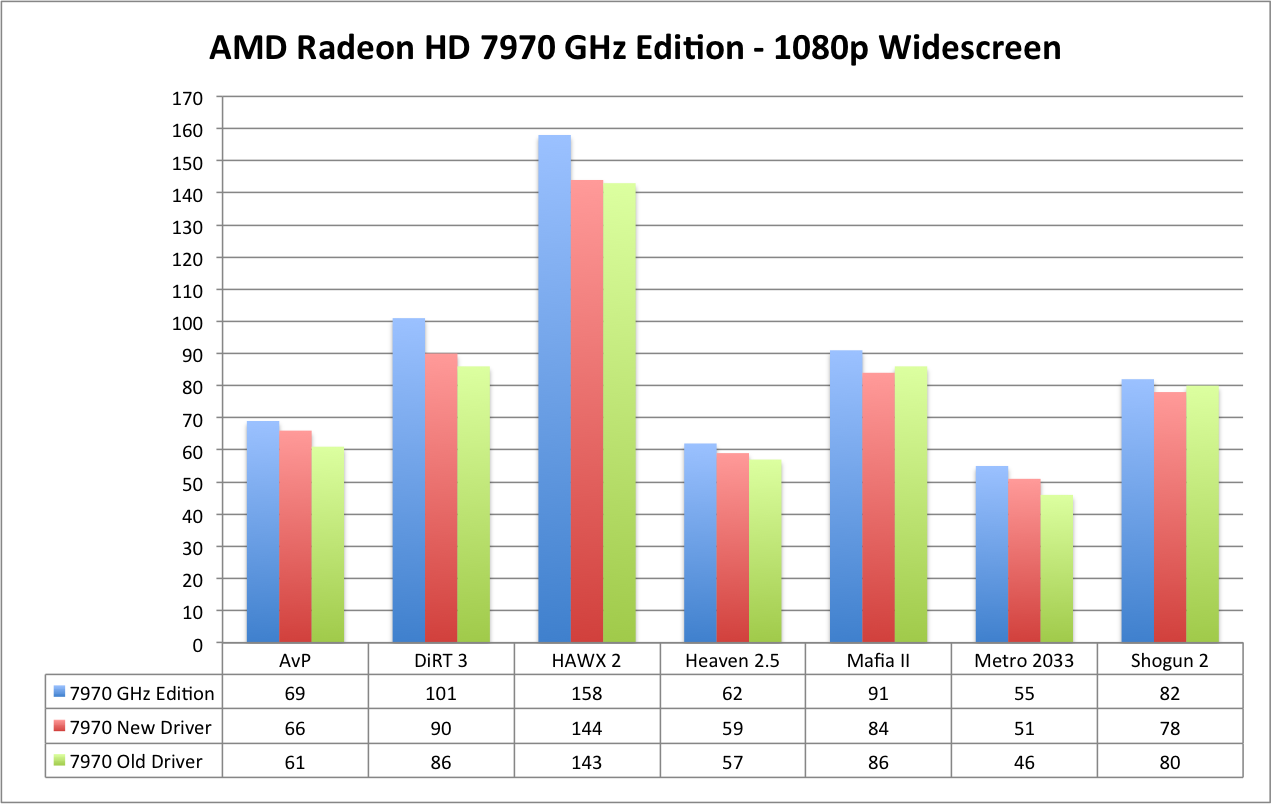

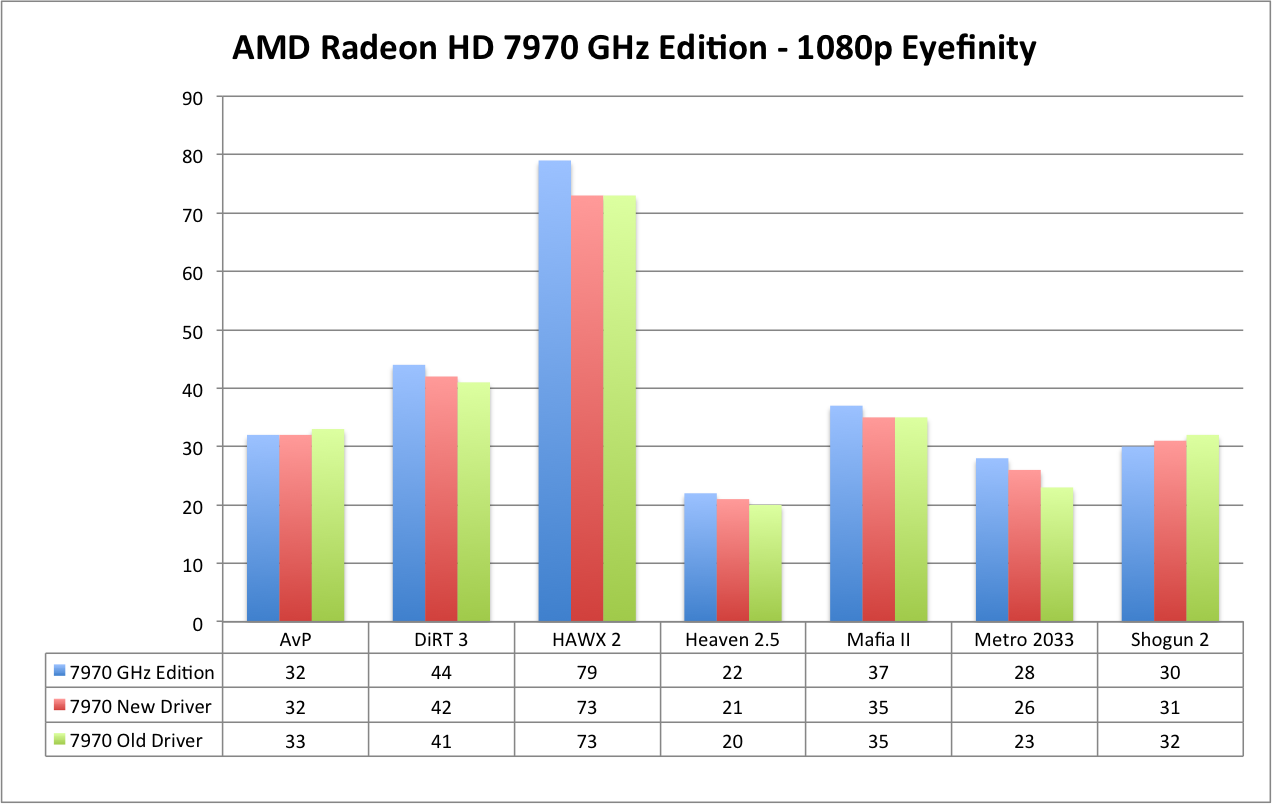
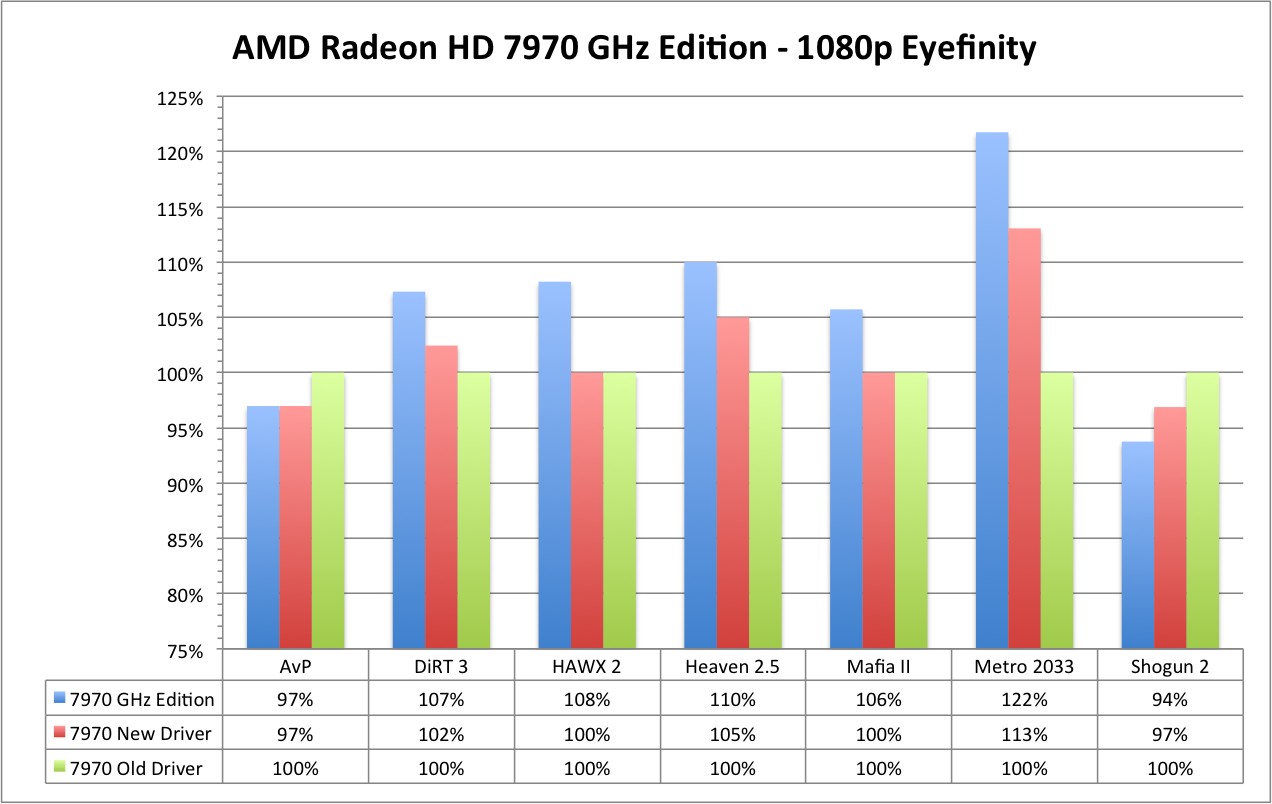
AMD Radeon Refresh - HD 7970 GHz Edition (Review, Pt 2)
Graphics Core Next: One Year Later
Behind the scenes, AMD has been working to develop new and improved rendering processes for the GCN architecture. The first of these is a new rendering process called Forward+ Rendering. The end result is a combination of Forward and Deferred rendering techniques, that leverages the benefits of both.
With AMD rumored to be supplying the GPU for at least one next-gen console (based on Southern Islands), I wonder if this new Forward+ will find a home there. Note the slide bullet point that says "works well on game consoles".
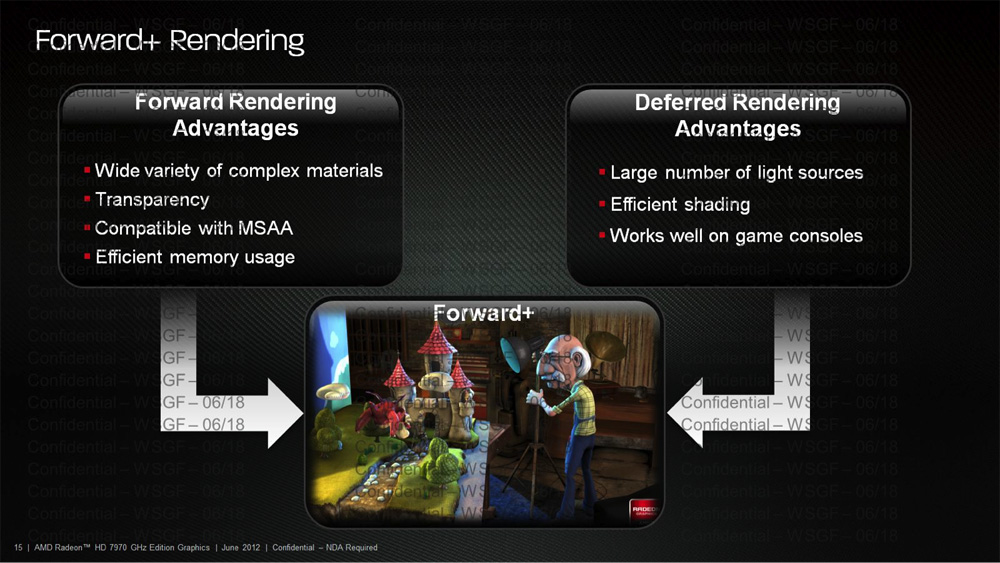
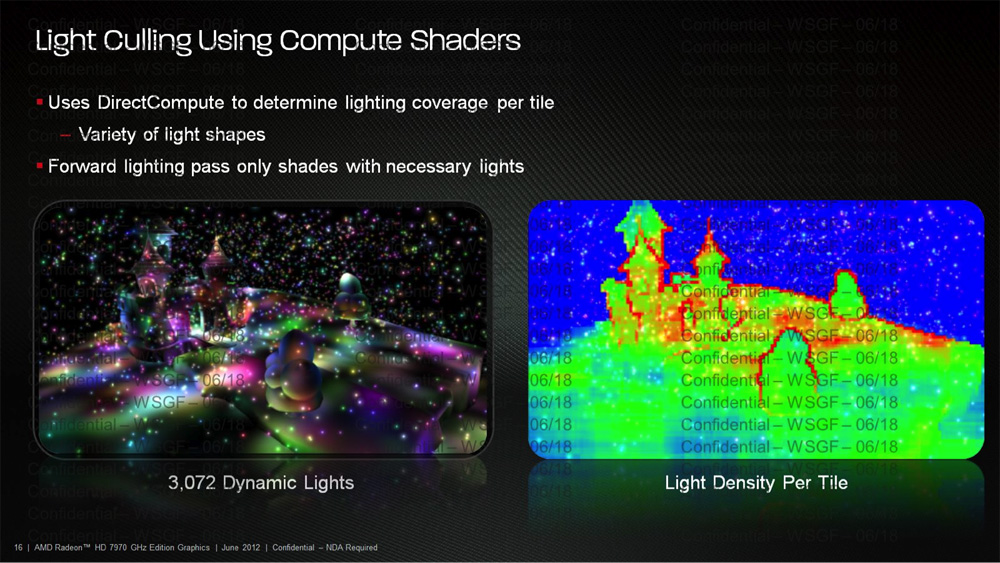
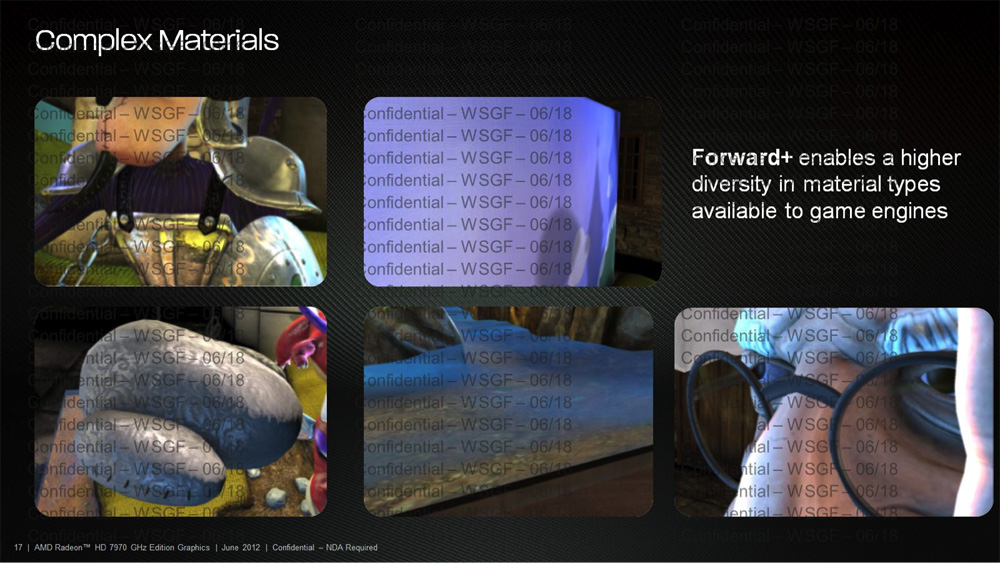

From an implementation perspective, AMD is turning this into features such as Global Illumination and Advanced Lighting - both of which are featured in Dirt Showdown.


Sniper Elite V2 is also making use of these new features by using DirectCompute to accelerate the calculations for Anti-Aliasing, High Def Ambient Occlusion and Depth of Field.

App Acceleration
AMD continues to push the general-purpose computing abilities of GCN, by leveraging the industry standard OpenCL platform to unlock to the massively parallel architecture of its GPU platform.
In the recent press conference (and in the accompanying press deck) AMD touts wins on four very popular programs: Handbrake, WinZip, GIMP and Photoshop CS6. I think it's cool that GPUs continue to be leveraged to help with non-gaming tasks. I think it's doubly cool that open source apps such as Handbrake and GIMP are leveraging an open source standard like OpenCL to accelerate performance.
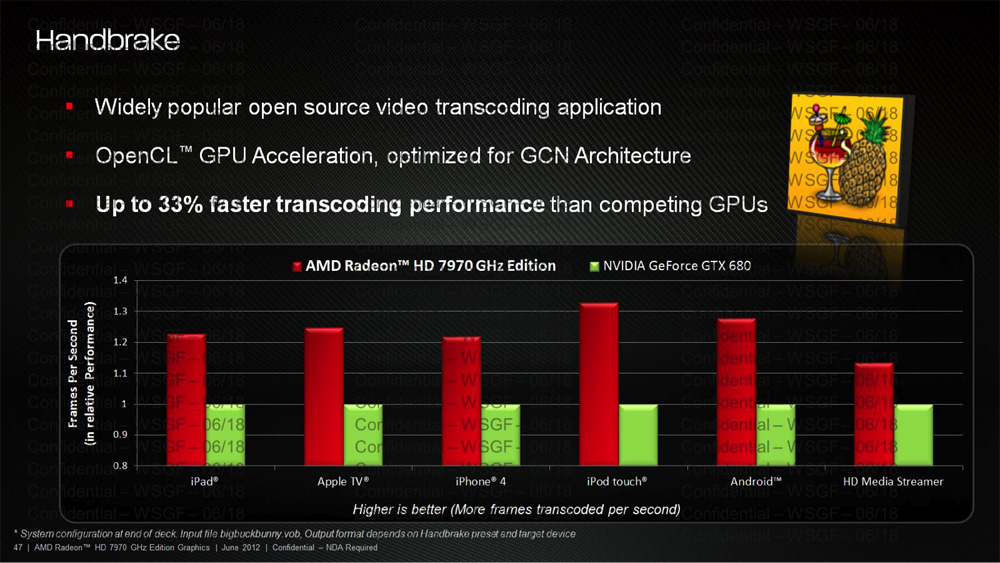
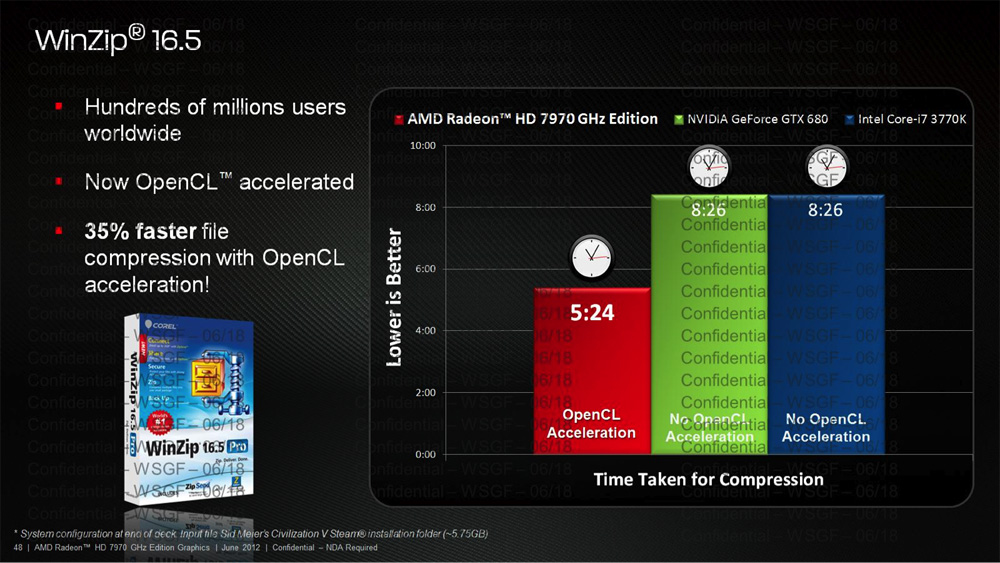
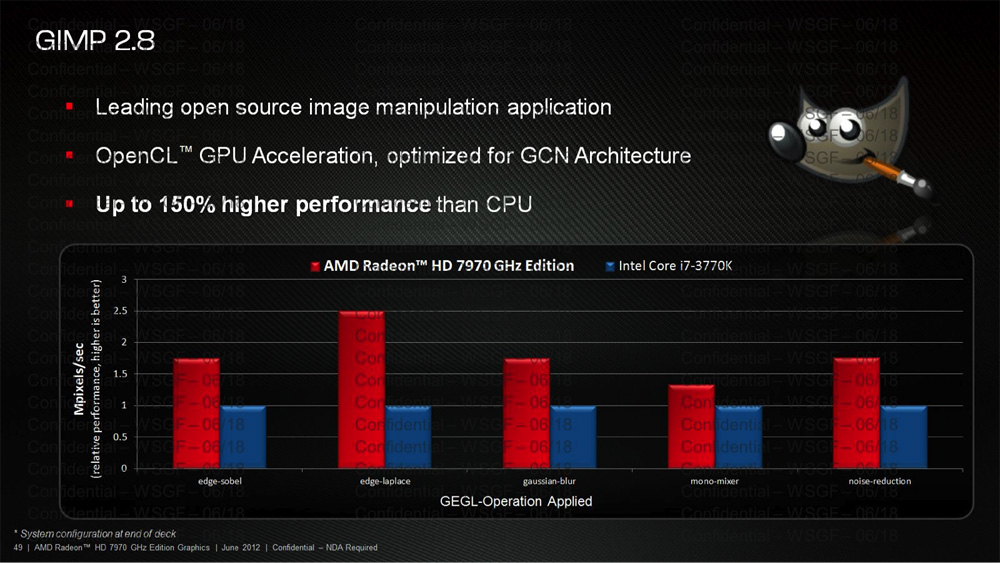
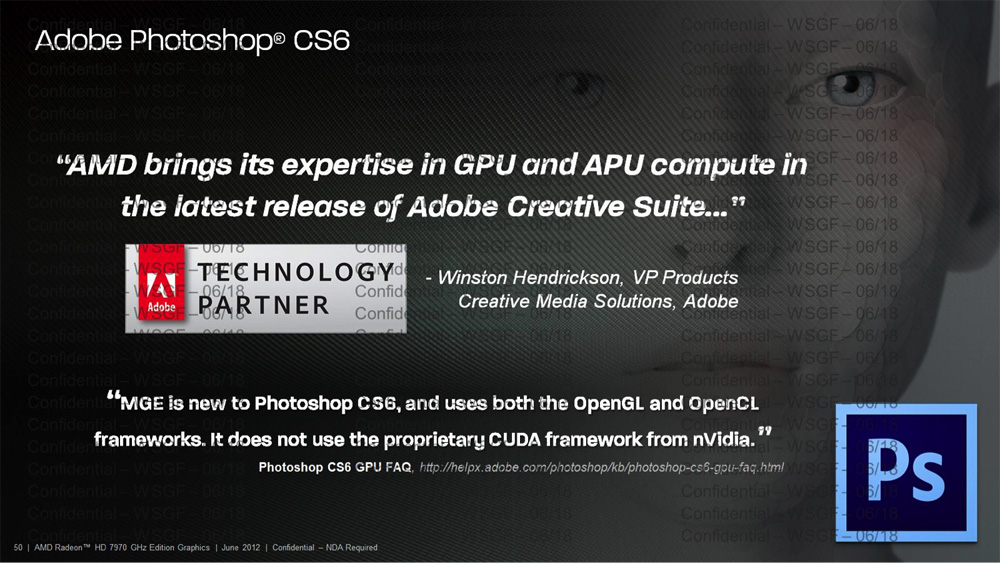
Conclusions
The new card is faster and more efficient than the original spin of the Tahiti silicon. While the GHz Edition did show substantial gains in 1080p benchmarking, I still say that a 3GB card is overkill for a single screen (except possibly a 27" or 30" panel running at 2560px wide, but I don't have one of those to test with).
The gains in Eyefinity were a bit more modest, but a 5% increase in performance lines up nicely with a 4% increase in price. If you're already in the market for an HD 7970, there is no reason not to spend the extra $20 for the GHz Edition. On the flip side, if you weren't interested in the HD 7970 before, this update probably won't sway you. Hopefully this new silicon does give us insight into what AMD is planning for the dual-GPU HD 7990. I'd love to see that card be dual versions of the HD 7970, rather than the HD 7950 (as has been the case with previous generations). It will also be interesting to see what AMD's partners can do with custom designs based on the GHz Edition.
If you're wondering how the refresh stacks up against the GTX 680, AMD claims it stacks up nicely and retakes the performance crown. I can't tell you for certain, because even after recent repeated attempts NVIDIA still doesn't see fit to let us borrow a card. I'm sure Kyle at HardOCP will have put both cards up against each other at 2560x1600. However, the card and driver have only been in out to press for less than a week, and they may not have been able to get multi-monitor stats as well.